The national flag, national anthem and national emblem are symbols of the country. Drafting the national flag, national anthem, and national emblem is an important task in the preparatory work for the new CPPCC. In the process of extensive collection and in-depth consultation, the preparatory meeting for the new CPPCC effectively respected the people's will and demonstrated the democratic spirit. The national flag and national anthem were first adopted at the first plenary session of the Chinese People's Political Consultative Conference. At the founding ceremony of the founding of the People's Republic of China, the five-star red flag was flying high and the "March of the Volunteers" was loud and clear!

"Flag Pattern Reference Materials" No. 1-38 Patterns
Open Solicitation
On June 16, 1949, at the first meeting of the Standing Committee of the New CPPCC Preparatory Committee, "Drawing up the national flag, national emblem and national anthem of the People's Democratic Republic of China" "Plan" was included as an important preparatory content. The meeting decided that the sixth group would be responsible for formulating the national flag, national anthem, national emblem, national capital, and calendar plans. Ma Xulun served as the team leader, and Ye Jianying was the deputy team leader. Since Ye Jianying also served as the director of the Peking Municipal Military Control Commission and was busy with affairs, Shen Yanbing was later added as the deputy team leader to preside over daily work. The members include Zhang Xiruo, Tian Han, Ma Yinchu, Zheng Zhenduo, Guo Moruo, Jian Bozan, Qian Sanqiang, Cai Chang, Li Lisan, Zhang Lan (Liu Wangli Ming Dynasty), Tan Jiageng , Ouyang Yuqian , Liao Chengzhi.
html On the afternoon of July 4, Ye Jianying presided over the first meeting of the Sixth Group in the first conference room of Qinzheng Hall, Zhongnanhai. The meeting elected Jian Bozan, Cai Chang, Li Lisan, Ye Jianying, Tian Han, Zheng Zhenduo, Liao Chengzhi, and Zhang Xiruo to form the National Flag and National Emblem Design Preliminary Committee, with Ye Jianying as the convener; Tian Han, Shen Yanbing, Qian Sanqiang, Ouyang Yuqian, and Guo Moruo were elected. Five people formed the National Lyric Score Preliminary Committee, with Guo Moruo as the convener. The meeting decided that Guo Moruo, Shen Yanbing and Zheng Zhenduo would draft a solicitation notice for the national flag, national emblem pattern and national lyrics, which would be revised by the group meeting and submitted to the Standing Committee of the New CPPCC Preparatory Committee for approval. After the solicitation notice was revised by Zhou Enlai, opinions were widely solicited from members of the Standing Committee of the New CPPCC Preparatory Committee, including Mao Zedong, Zhu De, Li Jishen, Zhang Lan, and Lin Boqu.
From July 14th to August 15th, "People's Daily" and many other newspapers and periodicals published solicitation notices in prominent locations. Other domestic newspapers, Hong Kong and overseas Chinese newspapers have reprinted it. The solicitation notice received enthusiastic response from all walks of life. Contributors include workers, farmers, businessmen, academics, and soldiers from all walks of life, as well as some scholars, artists, and senior leading cadres. As of August 20, 1,920 national flag manuscripts and 2,992 patterns were received (Zhu De and others submitted their own designs, and Guo Moruo submitted the design pattern at the third group meeting on August 24), and 112 national emblem manuscripts. , 900 patterns, 632 national anthems, 694 lyrics and music scores, and 24 letters of opinion.
Carefully select
On the afternoon of August 5, 1949, Ma Xulun chaired the second plenary meeting of the Sixth Group in the lobby on the sixth floor of Beijing Hotel. Everyone reviewed the received national flag design drafts and found that most of them were opinion-style sketches, mostly patterns composed of various drawing methods of stars, axes and sickles. The meeting decided to hire three experts, Xu Beihong, Liang Sicheng, and Ai Qing, as consultants for the national flag and national emblem pattern selection committee; hire four musicians, Ma Sicong, He Luting, Lu Ji, Yao Jinxin, as the national flag and national emblem selection committee. consultant.
html August 18-20 is the draft selection date determined by the sixth team. The sixth group set up a temporary reading room in the reception room No. 413 of the Beijing Hotel. All submitted designs are displayed here. At 10 a.m. on August 22, Ma Xulun presided over the first meeting of the National Flag and National Emblem Preliminary Committee in the temporary selection room. 16 national flag design drafts and 4 national emblem design drafts were initially selected and submitted to the Sixth Group for further review. During the discussion, Liang Sicheng raised the issue of specifying "numbers" for the colors of the national flag in the future, because artists divided the colors into hundreds of numbers. Jian Bozan suggested that the country make the red cloth of the national flag and call it "national flag red". This should be the first use of "national flag red".
Among the manuscripts received, there is a manuscript with the manuscript number 1232 received on August 11 and the national application manuscript number 1305. The author is Zeng Liansong of Shanghai's "Modern Economic News Agency". Unfortunately, the five-star red flag pattern he designed did not attract attention at the time.

The national flag application pattern designed by Zeng Liansong
html On August 23, the National Lyric Score Preliminary Committee held its first meeting to conduct preliminary selection and review of the submitted works. It also brought in pianos for trial playing and singing, and finally selected several works to be submitted to the sixth Group deliberations.
html On the morning of August 24, Ma Xulun presided over the third plenary meeting of the Sixth Group in the lobby on the sixth floor of the Beijing Hotel. As for the national flag, the 17 images entering the selection process (one additional image seems to be temporarily added - author's note) will be numbered. Representatives such as Liang Sicheng objected to some designs that left a quarter of the white space on the upper left, "too similar to the flags of the United States and the Kuomintang." Everyone agreed that "Primary No. 11" was better, and the red and white colors were appropriately distributed. , easy to make, the red star is above the corner, the flag can be seen without flying, the style is not the same as other countries, the color is beautiful, and it is also suitable for soliciting regulations in terms of meaning and symbolism. White symbolizes light, red symbolizes the revolutionary regime, and the red star represents the leadership of the Communist Party. For the sake of caution, the meeting decided to submit the re-election plan to the Standing Committee for discussion and review (later, the Standing Committee did not discuss it and just circulated it - author's note).

In the primary selection, the No. 11 flag pattern
Regarding the national anthem, 13 submissions were submitted for review of lyrics, which were copied and provided to the Standing Committee for reference. In order to facilitate comments, the author's name will not be published, but will be replaced by the registration number of Group 6. "March of the Volunteers" is not included in the national anthem plan for re-selection. Because the lyrics proposed in the re-election are not yet perfect, they are still being drafted by literary and art experts.
The national emblem received too few works and there was no one to adopt. Ma Xulun believed: "The issue of the national emblem can only be used as a reference and cannot be decided," and decided to invite experts to draft it.
html On August 26, the fourth plenary meeting of the Standing Committee of the Preparatory Committee was held in Qinzheng Hall, Zhongnanhai. Zhou Enlai praised Ma Xulun: "Mao's achievements in the sixth group were great. He collected more than 1,000 national flags." Ma Xulun said: "The national flag is quite complete." That means the eleventh day of the primary election. "Although we have received hundreds of pieces of national anthem, many of which are desirable, it can only be used as an ordinary revolutionary song. It is not enough as a national anthem. Now we have selected 13 pieces for everyone to see and ask the Standing Committee to make a decision." "The national emblem is being requested. It only takes half a month for experts to complete the painting. Once the painting is completed, it will be shown to everyone.” However, some people also objected to the national flag “primary election number 11” plan. Tan Kah Kee clearly raised three objections: First, the form is similar to Indonesia, except that the Indonesian flag does not have a star, so we added one star; secondly, the top is white and cannot be seen under the sun; thirdly, it does not express the Workers' and Peasants' Alliance righteous. He believes that the national flag notices must reflect the meaning of workers and peasants as the basis, but axes, sickles or other symbols that represent workers and peasants should not be used. This is against public opinion. Guo Moruo explained that the sixth group did not use the ax and sickle because they were afraid of being similar to the Soviet flag. Tan Kah Kee said that if there is such a reason, then he will explain it in the newspaper and ask for it again. The new CPPCC will not decide on the national flag this time and will decide it later. Tan Kah Kee's opinions were reported to Zhou Enlai.
html On the morning of September 14, Ma Xulun presided over the fourth plenary meeting of the sixth group in the East Restaurant of Beijing Hotel. The focus of the discussion was the issue of flag design. Ma Xulun said: We sent the national flag pattern selected at the last plenary meeting to Chairman Mao and the Central Committee of the Communist Party of China for a look. After research, we initially adopted the national flag pattern No. 11 to modify the pattern, but later felt that the pattern No. 17 was better... and Chairman Mao said that the alliance of workers and peasants does not have to be shown on the national flag, but can be shown on the national emblem. Tan Kah Kee continues to raise objections to the No. 11 primary election plan. After voting at the meeting, No. 11 pattern (4 votes) and No. 17 pattern (7 votes) were voted. These two plans, together with two patterns of the national emblem, were submitted to the Standing Committee for reference.The meeting decided to print the better designs among the submissions into booklets and distribute them to all delegates for group discussion, and to display all the submitted submissions in Zhongshan Park . Ma Xulun emphasized: If the national anthem cannot be released at the formal meeting, it can be later. The national flag must be discussed and approved at a formal conference... I hope the national emblem can be produced at the conference.
The first plenary session of the People's Political Consultative Conference is about to be held. All members of the Sixth Group are deeply aware of the heavy responsibility and have held several symposiums for repeated discussions and reviews. In the last few discussions, Liu Liangmo , Liang Sicheng, Zhang Xiruo, etc. proposed to use "March of the Volunteers" as the national anthem. This suggestion was also made in the submissions. "March of the Volunteers" was written by Tian Han and composed by Nie Er. It was created in 1935 and is the theme song of the movie "Children of the Storm". It was born at a historical moment when the Chinese nation was in danger. It was not only a clarion call to encourage the Chinese people to strive for national independence, but was also recognized by the international community and became one of the war hymns of the international anti-fascist camp during World War II.

In the 1930s, the movie "Children of the Storm" poster
html On September 17, the second plenary session of the preparatory meeting of the new CPPCC decided to transfer the formulation of the national flag, national emblem and national anthem to the first plenary session of the CPPCC, and the sixth group would The Presidium of the General Assembly submits a report.
All representatives discussed again
On September 21, 1949, Mao Zedong announced in his opening speech at the first plenary session of the People's Political Consultative Conference that one of the tasks of the meeting was to "formulate the national flag and national emblem of the People's Republic of China and decide on the design of the capital of the People's Republic of China." The location and the year name are the same as most countries in the world."
At the meeting, Ma Xulun reported the preliminary opinions of the sixth group to the conference: "The national flag submissions can be divided into four categories, including those with a sickle and hammer crossed with a five-pointed star, Jiahe gear with a five-pointed star or without a five-pointed star. The horizontal and vertical stripes of two or three colors plus sickle, golden harvest, gear or five-pointed star are not acceptable. The fourth is that two-thirds of the flag is red and one-third is white or blue. , yellow colors, and those with red or yellow five-pointed stars and variations, the advantage is simplicity. This form seems to be better than other forms (such as the compound character No. 1, which is one of the revised pictures No. 17 in the preliminary selection) . The national anthem must be collected in a planned manner, and the candidates must be composed and auditioned. After soliciting feedback from the public, the submission of the national anthem must be submitted for decision. Most of the submissions for the national emblem pattern do not comply with the system within a short period of time. For reference, only four or five styles were selected.” From this report, it can be seen that only the national flag was selected.
html On September 21, the first meeting of the Presidium of the First CPPCC Plenary Session approved the establishment of 6 review committee lists. One of them is the National Flag, National Emblem, and Capital Calendar Plan Review Committee, with a total of 55 people, with Ma Xulun as the convener. The work of the sixth group also continues. They selected 38 national flag submissions and compiled them into the "Flag Pattern Reference Materials" for discussion by all delegates. Numbering starts from compound number 1. The pattern number designed by Zeng Liansong is complex number 32. It was slightly modified to remove the sickle and ax in the original design. According to Peng Guanghan, secretary of the Sixth Group: "It was deleted after discussion by the Sixth Group. I also wrote the words 'remove sickle and axe' on the original manuscript. The rest of the pattern has not been modified."
On September 22, Ma Xulun was in Beijing The East Restaurant of the hotel hosted the fifth plenary meeting of the sixth group. This meeting reported a matter: the chronology and the location of the capital were designated by the presidium of the plenary session, and the sixth group was responsible for research. The meeting resolved: the capital was built in Peiping , and Peking was changed to Beijing; the Gregorian calendar was adopted for the calendar; the national flag was adopted with the compound number 3 (i.e., the preliminary drawing No. 17, which was revised based on Zheng Kaodu’s pattern) or the compound number 4 No. (i.e. revised chart No. 11 of the primary election).
html On the morning of September 23, the plenary session of the Chinese People’s Political Consultative Conference held a group discussion on "Opinions on the National Flag and Capital Anniversary". It was divided into 11 groups. 647 people were expected to attend, but 466 people actually showed up. The delegates had a lively discussion.The opinions on the capital and chronology were relatively consistent, but there were obvious differences on the national flag. The representatives concentrated on discussing the third and fourth numbers of the compound characters, but they also put forward opinions on other patterns. Due to the influence of the opinions expressed by the sixth group, the representatives did not fully express their opinions. Representative of Song Yunbin recorded in detail the discussion that day in his diary: The sixth group recommended "Fu Zi No. 3" and "Fu Zi No. 4". "I was not satisfied with these two patterns and expressed my opinion, roughly speaking. Our national flag should be red (red symbolizes revolution), which is a prerequisite. One-third of the fourth pattern is yellow, which is inconsistent with this condition. The third pattern splits a flag into two, which is particularly inconsistent. Instead of just After selecting the two patterns on the third and fourth sides, it is better to choose the "No. 1" pattern. The pattern of the "No. 1" is similar to the pattern No. 3, but the horizontal line is thinner and does not lead to the speaker. If there are more, the majority will be those who are in favor of adopting the No. 1 pattern. The discussion will not be in the form of a vote. Each person will fill in an opinion form and send it to the Sixth Group for reference. The pattern of No. 4 gives people a hint in advance, which is really inappropriate. "
At seven o'clock that night, the National Flag, National Emblem, National Anthem, and National Capital Anniversary Planning Group (Sixth Group) held its sixth plenary meeting in the second conference room of Qinzheng Hall. , summarize the discussion results.
On September 24, the sixth group submitted a discussion report. Judging from the report, the discussion about the national flag is the most intense and controversial. Regarding the national flag, the comprehensive opinions discussed are:
(1) According to the statistics of the opinions solicited by each group, the most people who agreed with the number 3 of the compound character were 185 people, followed by 129 people for the number 4 of the compound character, and 112 people for the number 1 of the compound character. , No. 2 77 people. In short, most of the representatives agreed with the type of a star and a yellow stripe on the corner of the red flag. A total of 342 people thought it was better. However, there were a few explanations about the color of the star, the thickness, position, length and symbolism of the yellow stripe. Different views.
1. Most representatives disagreed with the reference description that “yellow symbolizes China’s yellow race and peace.” Because it is unscientific to classify human beings based on skin color. At the same time, in the past two centuries, imperialists have used it to express their racial superiority, and white is used internationally to symbolize peace, so this explanation should be revised.
2. The yellow strip symbolizes the Yellow River , the birthplace of China's economy and culture. Some people disagree, because the Yellow River is only the birthplace of Han Chinese , and the Yellow River is a worry for China, so this explanation is inappropriate.
3. Some people disagree that the five-pointed star symbolizes China’s population of 500 million. Since the population is gradually developing, it can be used to symbolize the starlight shining on the earth.
4. Red not only symbolizes revolution, but also symbolizes labor.
5. Some people do not agree with the yellow stripe running through it, because it seems to separate the red color - revolution.
(2) Some people believe that the use of sickles and axes should not be avoided, otherwise the workers and peasants will not be able to express themselves.
(3) There are 18 people including Zhang Zhizhong, Shao Lizi, Chen Shaoxian, etc. who advocate the adoption of the complex character No. 15, and Yan Jingyao said that most students at Yenjing University are in favor of the complex character No. 15.
(4) Fifteen people including Hu Juewen , Li Zhuchen , Lei Rongke advocated the use of the compound number 32, but the four small stars can be moved slightly downward.
(5) Hong Shen proposed to use No. 28 for the national flag, but only need to add one star. There are 12 major reasons for this.
(6) Luo Longji proposed that there be a white five-pointed star in the red flag to symbolize peace.
Regarding the national flag pattern, this group made four more revised patterns based on the opinions put forward by representatives during the group discussion on the 23rd.
In the report, the suggestion given by the Sixth Group was "Today we discussed with Comrade Ai Qing and felt that it would be better to rename No. 4" and reported its opinions to the presidium. In the annex to the report, there are four newly revised national flag patterns that incorporate the opinions of representatives and experts, three of which adopt the concept of four small stars surrounding a large star.
Peng Guanghan recalled that despite repeated discussions and selections, there were still big differences in the selection of the national flag design. Although there are more people in favor of the "Fu Zi No. 3" and "Fu Zi No. 4" recommended by the sixth group, the opponents are very determined. They mainly believed that such patterns had a sense of "division", especially since there were still some areas in the south that had not been liberated at that time, and there was a suspicion of separation between the north and the south. Wu Zaoxi also wrote a special letter to Zhou Enlai to oppose the suggestions of the Sixth Group.
In view of the considerable opposition, the concise and generous "Fu Zi No. 32" has attracted attention again.
Fengzeyuan Final Word
The founding ceremony of the People’s Republic of China is imminent, but some major issues such as the national flag, national emblem, and national anthem have yet to be discussed and unresolved. On the evening of September 25, 1949, Mao Zedong and Zhou Enlai held a capital consultation symposium on the national flag, national emblem and national anthem in Fengze Garden, Zhongnanhai.
The list of participants in this symposium was personally agreed upon by Mao Zedong and Zhou Enlai. Mao Zedong also deliberately deleted the names of several CCP members and added several non-party and cultural figures. Guo Moruo, Shen Yanbing, Huang Yanpei, Chen Jiageng, Zhang Xiruo, Ma Xulun, Tian Han, Xu Beihong, Li Lisan, Hong Shen, Ai Qing, Ma Yinchu, Liang Sicheng, Ma Sicong, Lu Ji, and He Luting attended the symposium.
At 8 o'clock that evening, the symposium began. Mao Zedong first took the large-scale five-star red flag pattern "No. 32" prepared in advance and said clearly: In the past, we always wanted to draw Chinese characteristics on the national flag, so we drew a strip to represent the Yellow River. In fact, the flags of many countries do not necessarily have the characteristics of that country. The ax and sickle of the Soviet Union does not necessarily represent the characteristics of the Soviet Union. Which country has the same ax and sickle. The flags of Britain and the United States also have nothing special about the country. Therefore, our pattern expresses the great unity of our revolutionary people. We need great unity now and we will need great unity in the future. Whether now or in the future, it is both unity and revolution. Mao Zedong gave this five-star red flag pattern a new meaning, which was unanimously approved by everyone.
Tan Kah Kee said: "I have been very concerned about the national flag issue since I came back from Northeast China. I completely agree with the 32nd pattern mentioned by Chairman Mao."
Liang Sicheng said: "I think the 32nd pattern is very good, and it is not very different from the military flag. . The multiple stars represent the great unity of the people, and the red represents the revolution, indicating the great unity of the revolutionary people." After discussion, the pattern No. 32 was determined as the national flag plan.
That night, based on Ma Xulun's proposal, the symposium discussed the national emblem, national anthem, national capital and other issues.
Regarding the national emblem, since everyone was not satisfied with the submitted national emblem pattern, Mao Zedong said: The national flag determines whether the national emblem can be decided more slowly. It will be left to the government to decide in the future.
Regarding the capital, everyone agrees with the establishment of Peking as the capital. As for the name, Huang Yanpei suggested that it be better not to change it. Mao Zedong said, "It would be better to change one word", so he changed the name to Beijing.
Regarding the chronology, everyone agreed to adopt the Universal AD chronology.
Regarding the national anthem, everyone has a very lively discussion. The meeting left such a record:
Ma Xulun: Our government is about to be established, and the national anthem cannot be produced at once due to the current situation. Can we temporarily use "March of the Volunteers" as a temporary substitute for the national anthem.
Zhang Xiruo and Liang Sicheng: I think the song is a historical product. In order to maintain its integrity, I advocate that the music and lyrics should not be modified.
Xu Beihong: This march can only temporarily replace the national anthem.
Guo Moruo: I agree to temporarily use her as the national anthem. Because not only Chinese people but also foreign people can sing it, but it would be better if the lyrics are modified.
Huang Yanpei: I think it would be better if the words are not changed.
Tian Han: I think the song is good, but the lyrics had historical significance in the past, and now they should give way to new lyrics.This word was not written by Nie Er. We were arrested after writing a paragraph, so we published it under Nie Er's name.
Zhou Enlai: Either use the old lyrics so that they can arouse emotions. After the revision, you won’t have that emotion when you sing them.
Mao Zedong: Changes still have to be made, but the old ones still have to be made.
The symposium ended with the "March of the Volunteers" sang by the participants.
On the afternoon of September 26, the National Flag, National Emblem, National Anthem, and Capital Chronology Review Committee held its first meeting. Participants unanimously agreed: the national flag is planned to adopt the compound picture No. 32 and correct its description: red symbolizes revolution, and the star symbolizes the great unity of the Chinese people’s revolution. ; According to the national emblem pattern reference materials, experts are invited to draft it separately; before the official national anthem is formulated, it is planned to temporarily replace it with "March of the Volunteers"; the national capital is proposed to be in Peking and renamed Beijing; the Gregorian calendar is used for the calendar; the meeting content is reported to the CPPCC Plenary Session Presidium.
At 3 pm on September 27, Ma Xulun, on behalf of the National Flag, National Emblem, National Anthem, and Capital Annals Review Committee, made a report to the first plenary session of the Chinese People's Political Consultative Conference. At the meeting, Zhou Enlai presided over the adoption of resolutions on the national anthem and flag:
Before the national anthem of the People's Republic of China was officially determined, "March of the Volunteers" was adopted as the national anthem. Please raise your hands if you agree. ——Please let it go. If you disagree, please raise your hands. If you have any doubts about abstaining, please raise your hands. ——One person abstained. We now overwhelmingly adopt "March of the Volunteers" as our current national anthem.
The national flag of the People's Republic of China is the five-star red flag, symbolizing the great unity of the Chinese revolutionary people. Please raise your hands if you agree. ——Please let it go. If you disagree, please raise your hands. If you have any doubts about abstaining, please raise your hands. ——Two people abstained. The vast majority adopted the five-star red flag as our national flag.
On the afternoon of September 30, a huge five-star red flag was unfurled on the rostrum of the first plenary session of the CPPCC. The meeting completed all agendas and ended with the "March of the Volunteers".
The original text was published in the 9th edition of " People's Political Consultative Conference Newspaper " on July 14, 2022. Spring and Autumn Weekly
Author: Li Hongmei (Unit: Chinese People's Political Consultative Conference Literature and History Museum)






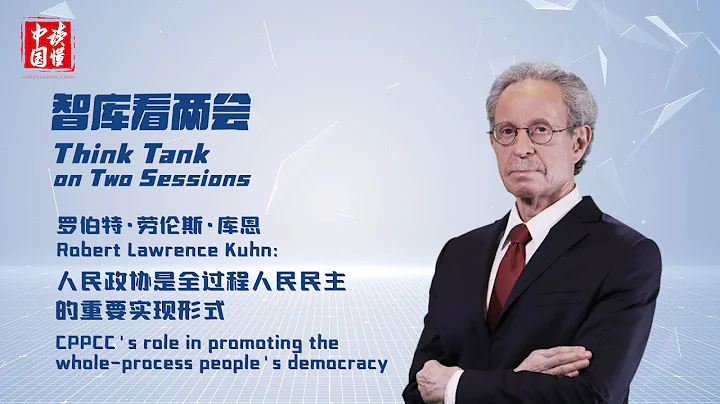
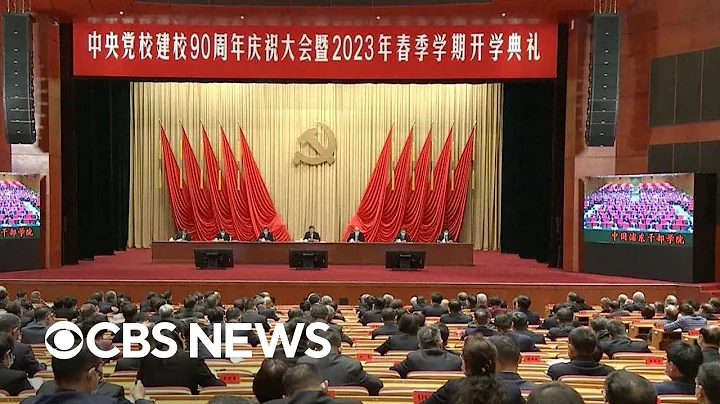
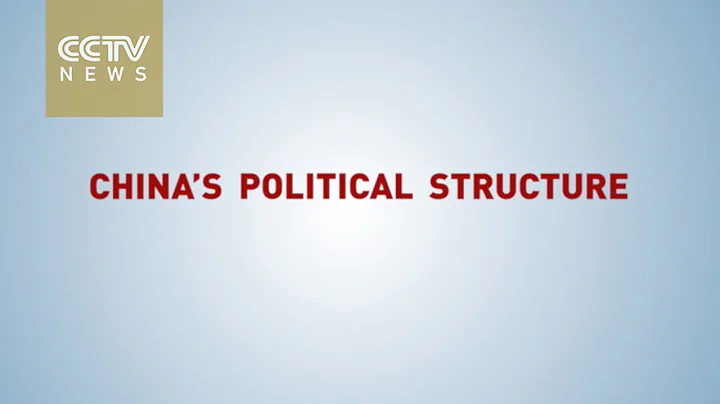
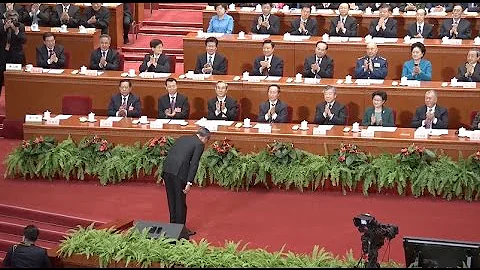
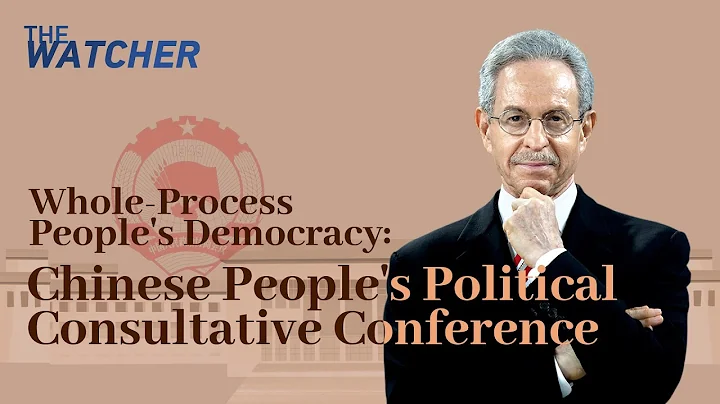

![[MULTI SUB]《紀總的閃婚夫人美又颯》灰姑娘被設計和總裁一夜情閃婚,本以爲互不干涉,沒想到總裁居然愛上小嬌妻,撒嬌索吻求她別離婚!💕#甜寵 #霸總 #言情 #chinesedrama #短剧 - DayDayNews](https://i.ytimg.com/vi/s358L1nPbX8/hq720.jpg?sqp=-oaymwEcCNAFEJQDSFXyq4qpAw4IARUAAIhCGAFwAcABBg==&rs=AOn4CLDVeayGt1vk973FG0bsm0EvMJoHfQ)
![[MULTI SUB]《吉祥三寶總裁爹地超寵妻》繼妹頂替她嫁給總裁,6年後她帶天才3寶殺回國!婚禮現場碰瓷大喊爹地,總裁傻眼了!💕#甜寵 #豪門 #霸總 #言情 #chinesedrama #短剧 - DayDayNews](https://i.ytimg.com/vi/Ook5mhl06Vc/hq720.jpg?sqp=-oaymwEcCNAFEJQDSFXyq4qpAw4IARUAAIhCGAFwAcABBg==&rs=AOn4CLD1ToCM0SHZJn-IrOf1vT-g2yCCGQ)
![[MULTI SUB]《我有三個哥哥超寵我》養母全家嫌她窮酸百般欺負,不料她被三個大佬哥哥認回豪門,成爲團寵千金逆襲人生!#甜寵 #虐戀 #豪門 #霸總 #言情 #chinesedrama #短剧 - DayDayNews](https://i.ytimg.com/vi/J2Ed4J5eUeI/hq720.jpg?sqp=-oaymwEcCNAFEJQDSFXyq4qpAw4IARUAAIhCGAFwAcABBg==&rs=AOn4CLAVEI1_1bxJd8VFi6Wlul7Zxr5k7w)



![[MULTI SUB]《一夜五寶,三個大佬搶著當爹地》那一夜灰姑娘做了總裁解藥,沒想到一下子中了五個!5年後天才萌寶齊聚,把她送到總裁身邊!💕#甜寵 #豪門 #言情 #chinesedrama #短剧 - DayDayNews](https://i.ytimg.com/vi/cE5664GVu88/hq720.jpg?sqp=-oaymwEcCNAFEJQDSFXyq4qpAw4IARUAAIhCGAFwAcABBg==&rs=AOn4CLAk-VL9PzptJ8o5b6-fJ9ev9yIMrQ)
![[MULTI SUB]《總裁夫婦馬甲藏不住了》心機女搶占灰姑娘總裁夫人身份,還敢欺負她?下秒總裁老公直接派豪車來接,公開身份寵壞她!💕#小屋醉暖風 #甜寵 #霸總 #言情 #chinesedrama - DayDayNews](https://i.ytimg.com/vi/opHOGQlqVe4/hq720.jpg?sqp=-oaymwEcCNAFEJQDSFXyq4qpAw4IARUAAIhCGAFwAcABBg==&rs=AOn4CLDEiXsfhnguyK76ck-j-_peQEczsA)

